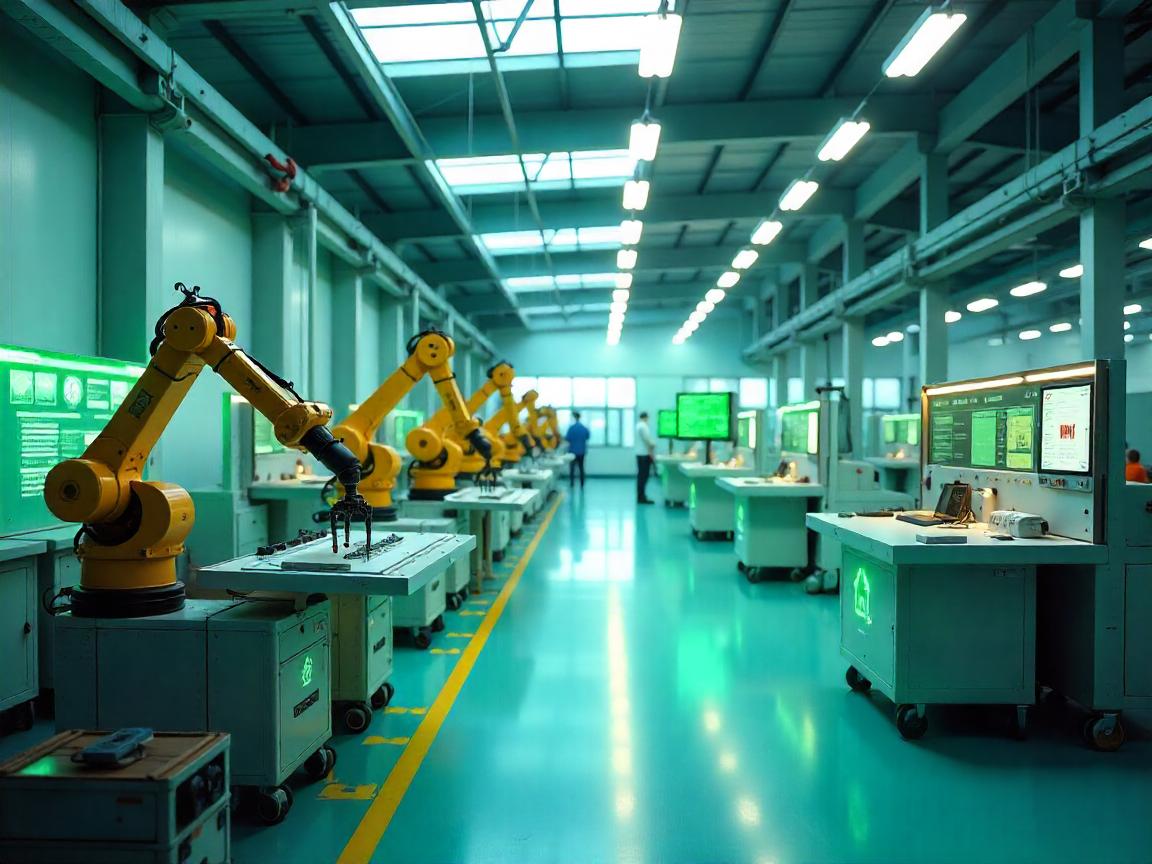
When Machines Go Green: A New Chapter for Industry
Robotics in Sustainable Manufacturing: We don’t usually consider robots as supporters of the environment. Even though they do not get as much attention, robotic systems are helping to make manufacturing more sustainable. Policymakers and media often focus on goals to reduce carbon, but it’s actually robots performing the most demanding tasks, both physically and mentally, on the factory floor. The embrace of green automation is having a big impact on production methods. But I promise, it’s happening now. It’s not something in the distant future; it’s present now.
Earlier this year, the IFR deemed “sustainability through robotics” as one of the leading trends expected for 2025. That is not shocking. It was revealed by the World Economic Forum that manufacturing is behind a fifth of global CO₂ emissions, so it is a clear focus for development. This plan isn’t limited to simply installing solar panels at factories. It covers how we redesign how machines sense, move around and function in general.
Green by Design: Where Smart Robotics Makes a Difference
Now, I’d like to talk about the process. Now, modern robotics particularly emphasizes using minimal energy by using collaborative robots. The UR20 model from Universal Robots – it’s faster, more powerful and today uses up to half the energy of similar robots from just five years before. I was able to observe this for myself at Automate 2025 in Chicago. In the halls, companies highlighted low-voltage robotic systems built to produce less heat and follow the most efficient movement paths. They are real, not tricks. Such changes are supported by research and result in proven savings for the environment.
Once AI is introduced, everything about the game becomes very different. Robotic devices automate and adapt what they do, based on AI input. As an illustration, Bosch uses predictive algorithms at its smart factories in Germany to adjust energy use, leading to a 28% drop in idle time on average. It can monitor the house, foresight your arrival from wherever you’re currently at.
Live Sustainable Factories: Real World Examples
Consider the design of the Siemens’ Amberg Electronics Plant. More than three-quarters of plastic components are produced by machines, while the defect rate is only 0.0012%. When students make fewer mistakes, there is less of everything thrown out to be corrected. In this case, sustainability is all about precision. You can see this in the Tesla Gigafactory in Nevada, as its robots carry out all the internal movement of items without human help which cuts fuel use and removes inefficient tasks.
Not only tech behemoths are making innovative changes. Buhler Group, a mid-size Swiss company that makes equipment, recently brought in robotics for grain sorting. The result? A 25% decrease in energy usage and a 30% decrease in the amount of waste in products, said the 2024 company sustainability report.
What enables robotics to be sustainable in actual situations:
- Improved energy efficiency is possible with electric actuators.
- Motion tracking and task delegation are both helped by AI.
- Adding renewable energy into the overall power mix
- Better forecasts based on data allow the company to reduce overproduction.
Fewer materials that are defective or rejected
What makes the Green Niche Important
Working with companies on robotics implementation in Asia and Europe, I’m confident in saying that they’re not choosing sustainable robotics simply for good feelings. They do it because the rewards are worthwhile. Energy efficiency is now an advantage other companies should consider, Dr. Singh noted. She’s right. Robots integrated with AI are reported by industry leaders to return as much as 35% faster, according to Deloitte’s 2025 Robotics and Sustainability 2025 Report.
Even the leaders of countries are noticing this trend. In March, the Commission unveiled a €1.2 billion fund to help with sustainable automation under the new Green Industrial Plan.
What’s Next? Going Further Than Chase Trying to Be Streamlined
Using robotics can actually lessen the amount you pay for power. The main benefit of this comes from our power to continue no matter what. Businesses that rely on smart robots can keep their factories running, with fewer workers, less equipment downtime and better record-keeping for inventory, all while reducing emissions. Having such options is especially valuable when we encounter climate risks.
Now, the main question is this: Could we imagine that sustainability led the way in every change to industry? We are starting to see those changes take place. Embracing digital today allows manufacturers to be cost-effective. Those who take this step will be in the lead for the next industrial revolution. Not only is it quicker, but… But greener. Smarter. And fairer.